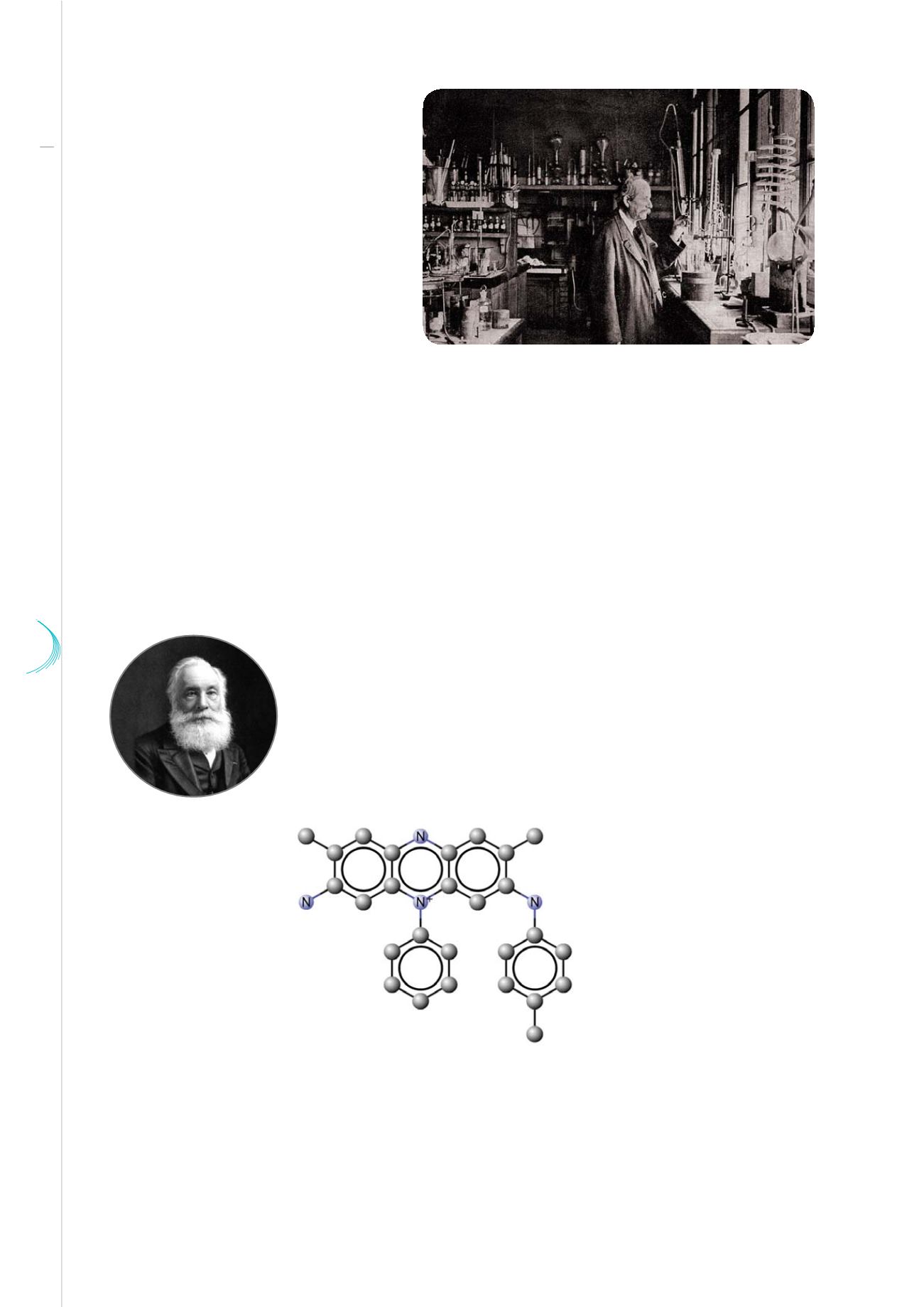

37 38
50
La Lettre
© Archives de l'Académie des sciences
Marcelin Berthelot (1827-1907)
© Pictorial Press Ltd - Alamy
© Bruno Villoutreix - Inserm
The synthesis of dyes launched the chemical
industry era: here is mauveine, the first
synthetic dye to be made (Perkin, 1856).
William Henry Perkin
(1838-1907)
later discovered! The periodic table
was probably one of the greatest
scientific discoveries ever: it showed
that no more than some tens of atoms
constitute all matter in the universe.
Incidentally, the very existence
of atoms was not yet universally
accepted: some chemists, such as
Marcelin Berthelot, violently opposed
the atomic theory!
With analysis, chemists finally
understood what matter was made of. In return, they could combine the elements in order to develop
the most creative part of chemistry, synthesis. Chemists were becoming able not only to understand
nature, but also to create new molecules. The synthesis of urea by Wohler, then that of acetylene by
Berthelot, showed that it was possible to synthesize an organic compound without resorting to the "vital
force". Marcelin Berthelot's work,
Organic Chemistry based on Synthesis
, published in 1860, triumphantly
opened the pathway for organic chemistry.
Chemistry was a science but it was also an industry, which, relying on the
new syntheses performed in the laboratory, would be a great contribution
to the industrial revolution
of the 19th Century.
The synthesis of dyes
– mauveine by Perkin,
indigo by Baeyer, the 1905
Nobel Prize – enabled the
organic industry to rise
and companies such as
BASF to be created, in
1865.
At the same time, inorga-
nic chemistry was develo-
ping the manufacture of
soda using the Leblanc
process, replaced 50
years afterwards by the
Solvay process. Technically ambitious and clever, the implementation of these processes is a model of
what the chemical industry has been able to achieve.


















